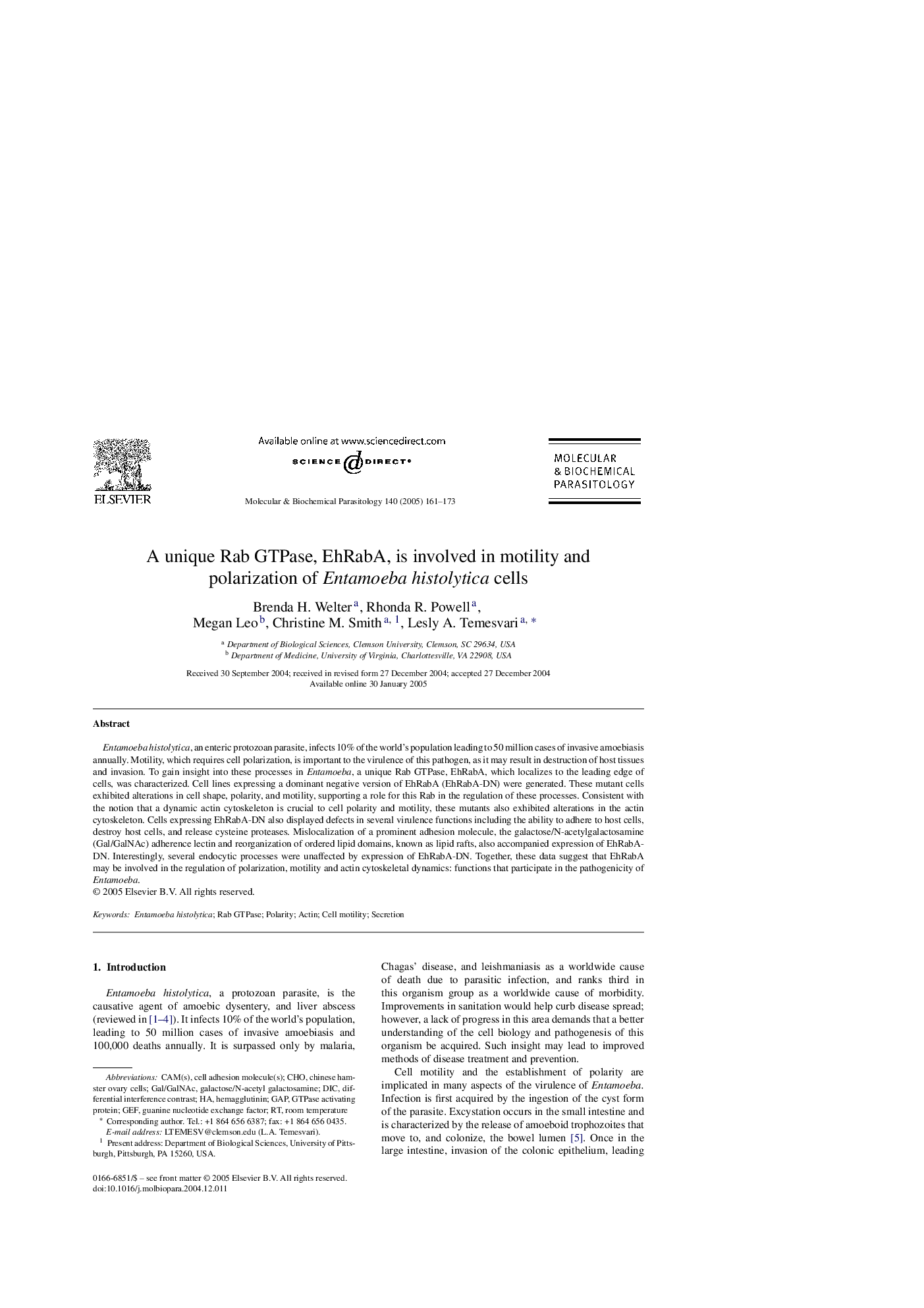| Article ID | Journal | Published Year | Pages | File Type |
|---|---|---|---|---|
| 9140047 | Molecular and Biochemical Parasitology | 2005 | 13 Pages |
Abstract
Entamoeba histolytica, an enteric protozoan parasite, infects 10% of the world's population leading to 50 million cases of invasive amoebiasis annually. Motility, which requires cell polarization, is important to the virulence of this pathogen, as it may result in destruction of host tissues and invasion. To gain insight into these processes in Entamoeba, a unique Rab GTPase, EhRabA, which localizes to the leading edge of cells, was characterized. Cell lines expressing a dominant negative version of EhRabA (EhRabA-DN) were generated. These mutant cells exhibited alterations in cell shape, polarity, and motility, supporting a role for this Rab in the regulation of these processes. Consistent with the notion that a dynamic actin cytoskeleton is crucial to cell polarity and motility, these mutants also exhibited alterations in the actin cytoskeleton. Cells expressing EhRabA-DN also displayed defects in several virulence functions including the ability to adhere to host cells, destroy host cells, and release cysteine proteases. Mislocalization of a prominent adhesion molecule, the galactose/N-acetylgalactosamine (Gal/GalNAc) adherence lectin and reorganization of ordered lipid domains, known as lipid rafts, also accompanied expression of EhRabA-DN. Interestingly, several endocytic processes were unaffected by expression of EhRabA-DN. Together, these data suggest that EhRabA may be involved in the regulation of polarization, motility and actin cytoskeletal dynamics: functions that participate in the pathogenicity of Entamoeba.
Keywords
Related Topics
Life Sciences
Biochemistry, Genetics and Molecular Biology
Molecular Biology
Authors
Brenda H. Welter, Rhonda R. Powell, Megan Leo, Christine M. Smith, Lesly A. Temesvari,
